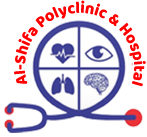Fungi that inhabit the environment are the source of fungal nail infections, which are widespread. They cause infection by penetrating through microscopic breaks in your nail or the surrounding skin.
Any region of the body might be impacted by fungal diseases. In addition to different bacteria, fungi are typically found inside and on the body. But you can become infected if a fungus starts to grow out of control.
The fungus that causes onychomycosis, also known as tinea unguium, can infect either the fingernails or the toenails. Any instant difference in the way your nail feels or looks may be too subtle to detect at first, as fungal infections typically grow over time.
Why Does It Develop?
Onychomycosis, also known as nail fungus, is caused by a fungal infection that affects the nails, generally the toenails. Yeasts, non-dermatophyte molds, and dermatophytes are among the fungi that cause this illness. The following are some typical elements that lead to the growth of nail fungus:
Warm and Moist Conditions
Warm, humid conditions are ideal for fungi growth. Regular contact with such environments, such as perspiring shoes and socks, might encourage the growth of fungi.
Damaged Nails
Fungi may be able to enter through cracked or damaged nails. Increased susceptibility can result from nail injuries, inadequately clipped nails, or nail-biting.
Inadequate Foot Hygiene
Fungi can thrive in an environment that is conducive to their growth if feet are not routinely cleaned and dried.
Age
Due to slower nail development, decreased blood circulation, and increasing exposure to fungi over time, older persons are more susceptible to nail fungus.
Medical Disorders
Diabetes, cardiovascular issues, weaker immune systems, and other disorders can make nail fungus more likely to develop.
Public Areas
Stepping outside barefoot in places like locker rooms, swimming pools, and public showers can cause fungal infections on your feet.
Nail Salon Procedures
Fungal infections can result from dirty instruments and inadequate sanitation in nail salons.
Tight or Non-Breathable Shoes
Wearing shoes that are too tight or not breathable might result in a moist atmosphere that promotes the growth of fungi.
Symptoms
- Discoloration: The nail could become yellow, brown, black, or white.
- Thinning: The damaged nail frequently gets thicker than normal.
- Crumbly or Brittle: The nail may become readily broken and brittle.
- Shape Shifts: The shape of the nail may change.
- Odour: An unpleasant odor may occasionally come from the infected nail.
- Nail Bed Separation: The nail may elevate or detach from the nail bed.
What Does It Look Like?
Typical indications of a fungal nail infection consist of:
- A malformed nail that could separate from the nail bed an unpleasant smell emanating
- From the diseased nail
- A thickened or fragile nail
Types of Nail Fungus
Distal Subungual Onychomycosis (DSO)
- Primarily caused by: Trichophyton rubrum, a dermatophyte species; this is the most prevalent kind. It begins at the distal edge of the nail and moves towards the cuticle.
- Symptoms: Thickening, separation from the nail bed, and yellowing of the nail.
White Superficial Onychomycosis (WSO)
- Primarily caused by: Trichophyton mentagrophytes.
- Affects: The nail’s exterior.
- Symptoms: White areas or spots on the nail surface that may crumble and powder.
Proximal Subungual Onychomycosis (PSO)
- More common in: Those with weakened immune systems.
- Primarily caused by: Dermatophytes, primarily Trichophyton rubrum.
- Spreads: Outward from the cuticle area.
- Symptoms: Thickening of the nail and separation from the nail bed, as well as white or yellow patches close to the cuticle.
Candidal Onychomycosis
- Caused by: Yeasts, primarily those belonging to the Candida species.
- Affects: Usually the fingernails and is more common in people who often wash their hands.
- Symptoms: Nail thickening, discoloration, and separation; discomfort and inflammation around the nail may also be present.
Complete Dystrophic Onychomycosis
- Caused by: Any of the fungus mentioned above in advanced stages.
- Describes: The final stage of nail infections caused by fungi.
- Symptoms: Total nail annihilation; brittle, discolored, and thicker nail fragments.
Treatment
Topical Antifungal Medications
Direct application of creams, gels, or nail lacquers to the afflicted nail.
Oral Antifungal Medications
Oral antifungal medications are pills that aid in the internal removal of the infection.
Laser Therapy
The fungus is killed by laser energy.
Removal of the Nail
In extreme circumstances, the nail may need to be removed.
At-Home Treatments
Though their efficacy varies, some people utilize vinegar, tea tree oil, or other natural remedies.
Prevention
- Keep Your Feet Clean and Dry: Wash and pat dry your feet on a regular basis.
- Appropriate Footwear: Put on moisture-wicking socks and breathable shoes.
- Avoid Going Barefoot in Public: When in common areas, use flip-flops or shower shoes.
- Correct Nail Trimming: Avoid cutting your nails too short and instead keep them neat and tidy.
- Disinfect Nail Tools: Clean and sanitize nail clippers and other instruments on a regular basis.
- Alternate Socks Frequently: Put on fresh socks each day.
Conclusion
Nail fungus is a common illness that can strike anyone. To prevent the infection, practice good hygiene, take good care of your nails, and stay away from risk factors. For a precise diagnosis and suitable treatment, seek advice from a healthcare provider if you think you may have a fungal nail infection.
